
Monastery of Leyre
Encyclopedia
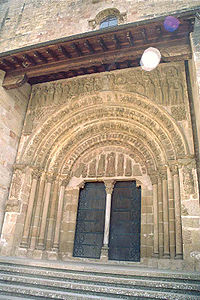
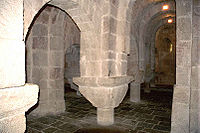
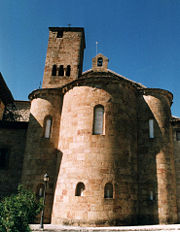
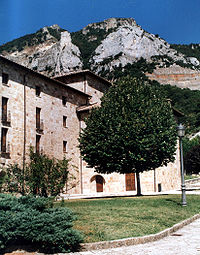
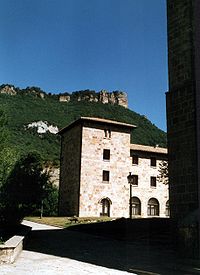
Navarre
Navarre , officially the Chartered Community of Navarre is an autonomous community in northern Spain, bordering the Basque Country, La Rioja, and Aragon in Spain and Aquitaine in France...
, Spain
Spain
Spain , officially the Kingdom of Spain languages]] under the European Charter for Regional or Minority Languages. In each of these, Spain's official name is as follows:;;;;;;), is a country and member state of the European Union located in southwestern Europe on the Iberian Peninsula...
, standing out as one of the most important historical monasteries of Spain. The oldest records of the site date from 842, when Íñigo Arista, held as first king of Pamplona
Kingdom of Navarre
The Kingdom of Navarre , originally the Kingdom of Pamplona, was a European kingdom which occupied lands on either side of the Pyrenees alongside the Atlantic Ocean....
, and Wilesindo, Bishop of Pamplona
Pamplona
Pamplona is the historial capital city of Navarre, in Spain, and of the former kingdom of Navarre.The city is famous worldwide for the San Fermín festival, from July 6 to 14, in which the running of the bulls is one of the main attractions...
, made a donation for the monastery. The monastery grew thereafter a major reference, coming to gather numerous properties and wealth in the first stage and middle stage of the Kingdom of Navarre thanks to the privileges and donations bestowed on them by the Navarrese kings, with the monastery reaching its zenith in the 12th century. Several kings of Navarre were buried there.
Since then it has been in various states of repair, undergoing many expansions and remodellations (the deepest one made in the 16th century, when almost the totality of the monastery was rebuilt). Romanesque architecture
Romanesque architecture
Romanesque architecture is an architectural style of Medieval Europe characterised by semi-circular arches. There is no consensus for the beginning date of the Romanesque architecture, with proposals ranging from the 6th to the 10th century. It developed in the 12th century into the Gothic style,...
pieces have survived until the present day (such as the church, with its Porta Speciosa), as well as even more ancient parts like the notable crypt
Crypt
In architecture, a crypt is a stone chamber or vault beneath the floor of a burial vault possibly containing sarcophagi, coffins or relics....
.
The monastery is located on one of the variant routes of the Way of Saint James coming from the Corridor of Berdún and Jaca. The name caught on as a female name under the form Leire, especially popular across the Basque Country.

